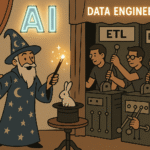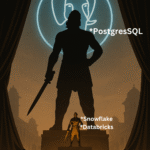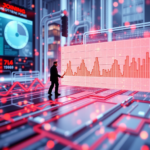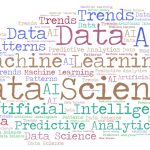In a world where GenAI, LLMs, and unstructured data dominate headlines, two major acquisitions recently made by industry giants signal a more grounded truth:
- Snowflake acquired Crunchy Data — a company known for hardened, enterprise-grade PostgreSQL.
- Databricks acquired Neon — a startup redefining Postgres with serverless, AI-native capabilities.
At first glance, this may seem counterintuitive. Why would two cloud leaders in the cutting-edge AI space double down on a decades-old relational database?
The answer lies in a deeper realization: structured data, transactional logic, and real-time access are critical to AI’s next evolution.
- Structured Data Is Still the Bedrock of Enterprise AI
Despite the rise of LLMs trained on the open web, the most valuable business insights live in structured data:
- Financial transactions
- CRM entries
- Supply chain records
- Product telemetry
This data is:
- Trusted: collected over years with domain-specific context.
- Governed: with clear ownership and lineage.
- Timestamped: ideal for predictive modelling and business intelligence.
For GenAI applications to work reliably in the enterprise — copilots, agents, or autonomous systems — they need a steady stream of high-quality, structured data. PostgreSQL and other RDBMSs remain the anchor point.
- Real-Time AI Needs Transactional Access
Modern AI systems aren’t just performing analysis. They’re increasingly:
- Executing actions autonomously
- Interacting with live systems (inventory, users, databases)
- Writing back outcomes to support closed-loop learning
This demands low-latency, safe transactional access — a feature unstructured data lakes and vector databases don’t provide.
Postgres, especially in serverless and scalable forms like Neon, becomes a foundation for:
- Live retrieval-augmented generation (RAG)
- Agent-based orchestration
- Embedded AI in operational workflows
- HTAP: The Convergence of OLTP + OLAP
The traditional split between:
- OLTP (Transactional) systems for capturing real-time operations
- OLAP (Analytical) systems for generating insights
…is now blending into HTAP (Hybrid Transactional/Analytical Processing). AI workloads demand this convergence:
- They read live data to make decisions.
- They write back to databases.
- They trigger workflows and updates.
Postgres, with its evolving capabilities, is uniquely positioned to serve as this hybrid platform.
- What It Means for Snowflake and Databricks
Snowflake: Doubling Down on Trust and Compliance
Crunchy Data offers hardened Postgres deployments trusted in government, healthcare, and financial sectors.
By acquiring it, Snowflake:
- Strengthens its governance and security story
- Brings Postgres closer to its secure Data Cloud
- Positions itself as the go-to platform for regulated AI adoption
This is not a pivot. It’s a fortification of its structured data core for the AI-native world.
Databricks: Speed, Developer Experience, and AI-Nativeness
Neon is fast, serverless, and built with a modern developer experience in mind.
For Databricks, this means:
- A Postgres engine designed for experimentation and branching
- Instant sandboxing of AI workloads
- Integration with vector search, notebooks, and ML pipelines
This aligns with their mission to be the AI-native Lakehouse.
Final Thought: Postgres Is Not Legacy — It’s the Future, Reimagined
These acquisitions aren’t about going backward.
They signal that:
The next generation of AI requires more than large models and unstructured embeddings. It needs reliable, real-time, structured systems to connect intelligence with action.
Snowflake and Databricks see this clearly — and they’re reshaping the AI infrastructure stack accordingly.
We’re entering an era where Postgres isn’t just a database — it’s the AI agent’s trusted brain and memory.
Let’s Talk
Are you building AI systems grounded in structured, real-time data?
Reach out — we’d love to discuss how to architect your stack for the future.
#AI #Postgres #StructuredData #Snowflake #Databricks #GenAI #EnterpriseAI #HTAP #AIInfrastructure #DataArchitecture
Author
-

As the leader of Data Science Initiatives at Brillersys, he brings over 12 years of expertise in designing and deploying data-intensive applications and machine learning models. He focuses on solving complex business challenges and enhancing data-driven decision-making across various industries and domains.
View all posts Lead Data Scientist | Machine Learning Engineer








Leave a Reply